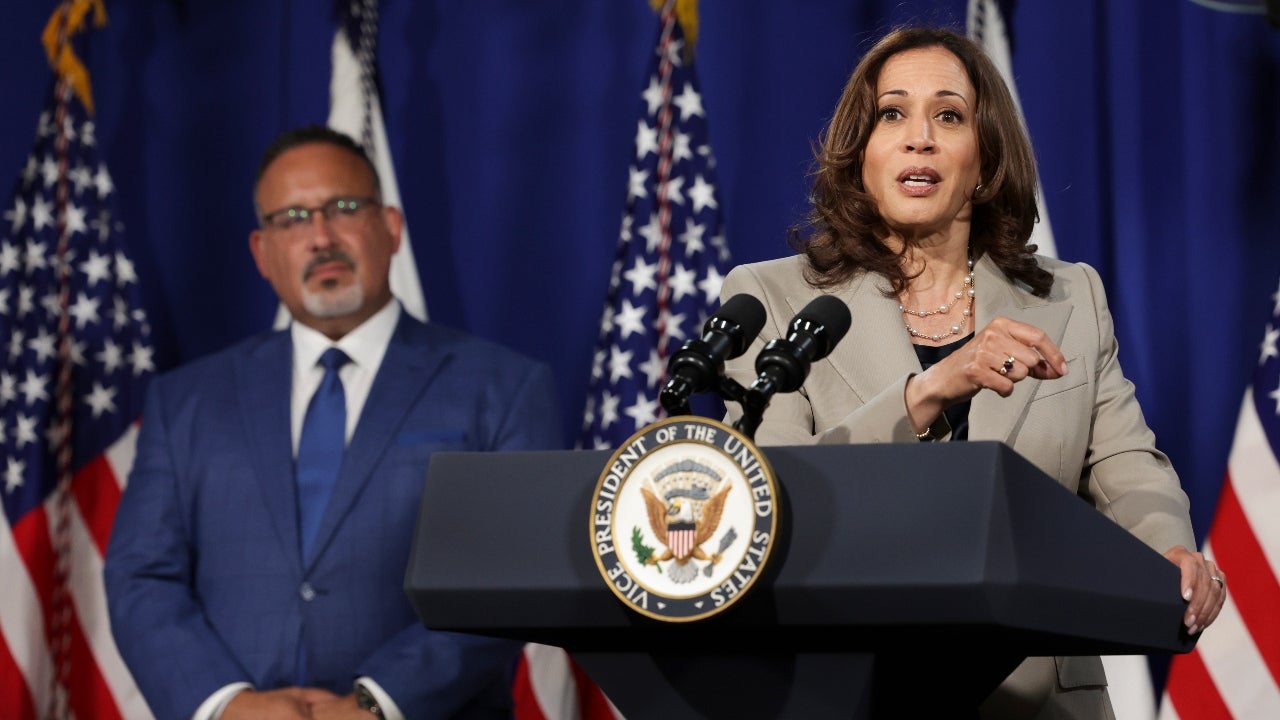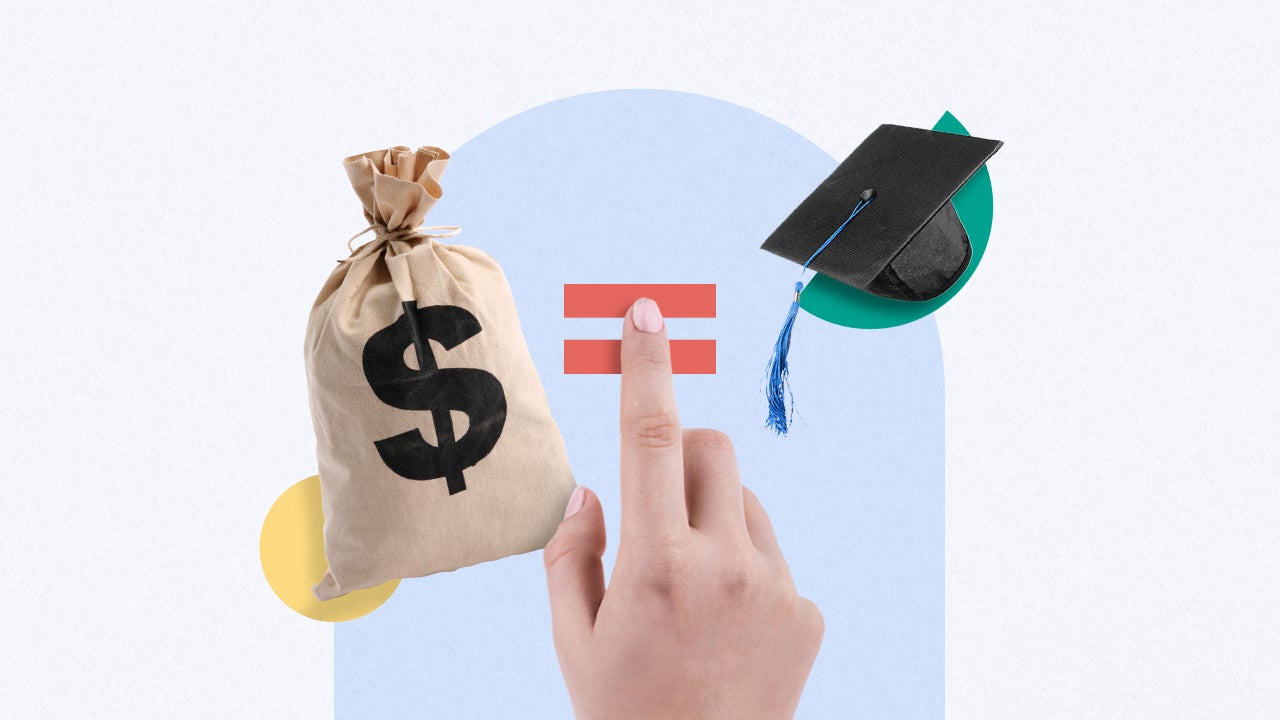ELIGIBILITY DISCLOSURES
Student Lending Eligibility Criteria: Applicants must be a U.S. citizen, permanent resident, or eligible non-citizen with a creditworthy U.S. citizen or permanent resident co-signer. For applicants who have not attained the age of majority in their state of residence, a co-signer is required. Citizens reserves the right to modify eligibility criteria at any time. Citizens private student loans are subject to credit qualification, completion of a loan application/Promissory Note, verification of application information, and if applicable, self-certification form, school certification of the loan amount, and student’s enrollment at a Citizens participating school.
Education Refinance Loan Eligibility: Applicants must have attained a bachelor’s degree or higher to refinance their loan.
Education Refinance Loan for Medical Residency Eligibility: Applicants must have graduated from medical school and be matched to a MD, DO, DDS, DMD, DPM, DVM, VMD, PharmD, OD residency or fellowship program at the time of application.
Education Refinance Loan for Parents Eligibility: The primary applicant must be the primary borrower or co-signer on the loan to be refinanced.
Student Loan Eligibility: Applicants must be enrolled at least half-time in a degree-granting program at an eligible institution.
Student Loan for Parents Eligibility: The student whose education expenses will be paid for with the loan proceeds must be a U.S. citizen or permanent resident and must be enrolled at least half-time in a degree granting program at a Citizens-participating school.
RATE DISCLOSURES
Variable Rate Disclosure: Variable interest rates are based on the 30-day average Secured Overnight Financing Rate (“SOFR”) index, as published by the Federal Reserve Bank of New York. As of Jul 01, 2024, the 30-day average SOFR index is 5.33%. Variable interest rates will fluctuate over the term of the loan with changes in the SOFR index, and will vary based on applicable terms, level of degree and presence of a co-signer. The maximum variable interest rate is the greater of 21.00% or the prime rate plus 9.00%.
Fixed Rate Disclosure: Fixed rate ranges are based on applicable terms, level of degree, and presence of a co-signer.
Lowest Rate Disclosure: Lowest rates are only available for the most creditworthy applicants, require a 5-year repayment term, interest-only repayment, and include our Loyalty and Automatic Payment discounts of 0.25 percentage points each, as outlined in the Loyalty Discount and Automatic Payment Discount disclosures. Rates are subject to additional terms and conditions, and are subject to change at any time without notice. Such changes will only apply to applications taken after the effective date of change.
Education Refinance Loan Rate Disclosure: Variable interest rates range from 7.03% - 12.42% (7.04% - 12.43% APR). Fixed interest rates range from 6.49% - 10.98% (6.50% - 10.99% APR).
Medical Residency Refinance Loan Rate Disclosure: Variable interest rates range from 7.03% - 11.53% (7.04% - 11.54% APR). Fixed interest rates range from 6.49% - 10.09% (6.50%- 10.10% APR).
Education Refinance Loan for Parents Rate Disclosure: Variable interest rates range from 7.82% - 11.53% (7.83% - 11.54% APR). Fixed interest rates range from 7.28% - 10.09% (7.29% - 10.10% APR).
Student Loan Rate Disclosure: Variable interest rates range from 5.99% - 16.60% (5.99% - 16.60% APR). Fixed interest rates range from 4.24% - 15.60% (4.24% - 15.60% APR).
Undergraduate Loan Rate Disclosure: Variable interest rates range from 5.99% - 16.60% (5.99% - 16.60% APR). Fixed interest rates range from 4.24% - 15.60% (4.24% - 15.60% APR).
Graduate Loan Rate Disclosure: Variable interest rates range from 5.99% - 15.10% (5.99% - 15.10% APR). Fixed interest rates range from 4.24% - 14.10% (4.24% - 14.10% APR).
Business/Law Loan Rate Disclosure: Variable interest rates range from 5.99% - 15.10% (5.99% - 15.10% APR). Fixed interest rates range from 4.24% - 14.10% (4.24% - 14.10% APR).
Medical/Dental Loan Rate Disclosure: Variable interest rates range from 5.99% - 13.77% (5.99% - 13.39% APR). Fixed interest rates range from 4.24% - 12.41% (4.24% - 12.41% APR).
Parent Loan Rate Disclosure: Variable interest rates range from 6.99% - 10.60% (6.99% - 10.61% APR). Fixed interest rates range from 5.99% - 10.60% (5.99% - 10.61% APR).
STUDENT LENDING PROGRAM DISCLOSURES
Wireless Charges: Wireless carrier, text, and/or data charges may apply.
Loyalty Discount: The borrower will be eligible for a 0.25 percentage point interest rate reduction on their loan if the borrower or their co-signer (if applicable) has a qualifying account in existence with us at the time the borrower and their co-signer (if applicable) have submitted a completed application authorizing us to review their credit request for the loan. The following are qualifying accounts: any checking account, savings account, money market account, certificate of deposit, automobile loan, home equity loan, home equity line of credit, mortgage, credit card account, or other student loans owned by Citizens Bank, N.A. Please note, our checking and savings account options are only available in the following states: CT, DC, DE, FL, MA, MD, MI, NH, NJ, NY, OH, PA, RI, VA, and VT and some products may have an associated cost. This discount will be reflected in the interest rate disclosed in the Loan Approval Disclosure that will be provided to the borrower once the loan is approved. Limit of one Loyalty Discount per loan and discount will not be applied to prior loans. The Loyalty Discount will remain in effect for the life of the loan.
Investors Bancorp, Inc. Loyalty Discount: To receive the Loyalty Discount for having a qualifying account with Investors Bancorp, Inc., borrowers must contact Citizens by telephone prior to signing the promissory note. Student loan borrowers please call (877) 291-6385 and education refinance borrowers please call (888) 411-2413.
Automatic Payment Discount: Borrowers will be eligible to receive a 0.25 percentage point interest rate reduction on their student loans owned by Citizens Bank, N.A. during such time as payments are required to be made and our loan servicer is authorized to automatically deduct payments each month from any bank account the borrower designates. Discount is not available when payments are not due, such as during forbearance. If our loan servicer is unable to successfully withdraw the automatic deductions from the designated account three or more times within any 12-month period, the borrower will no longer be eligible for this discount.
Get My Rate: Selecting “Get My Rate” only requires a “soft credit pull“ which does not affect your credit score. Submitting a full application will result in an inquiry on your credit report.
Multi-Year Approval: Funds available for future use are subject to a soft credit inquiry at time of your next request to verify continued eligibility. After we make the initial Loan to you, you must continue to meet eligibility criteria to obtain additional funds under the Multi-Year Approval feature. Terms and conditions are outlined in the promissory note. Multi-Year Approval borrowers have a 99% approval rate on future requests for additional funds. The additional funds approval rate is based on the percentage of approved Multi-Year borrowers from Citizens between October 1, 2022 and October 1, 2023. The approval rate represents only borrowers who had previously accepted the Multi-Year Approval offer. Please Note: International students are not eligible for Multi-Year Approval.
Co-signer Release: Borrowers may apply for co-signer release after making 36 consecutive on-time payments of principal and interest. For the purpose of the application for co-signer release, on-time payments are defined as payments received within 15 days of the due date. Interest only payments do not qualify. The borrower must meet certain credit and eligibility guidelines when applying for the co-signer release. Borrowers must complete an application for release and provide income verification documents as part of the review. Borrowers who use deferment or forbearance will need to make 36 consecutive on-time payments after reentering repayment to qualify for release. The borrower applying for co-signer release must be a U.S. citizen or permanent resident. If an application for co-signer release is denied, the borrower may not reapply for co-signer release until at least one year from the date the application for co-signer release was received. Terms and conditions apply. Borrowers whose loans were funded prior to reaching the age of majority may not be eligible for co-signer release. Note: co-signer release is not available on the Student Loan for Parents or Education Refinance Loan for Parents.
Student Loan Aggregate Limits: You may borrow up to the maximum qualified loan amount or the total cost of education, whichever is lower. Our student loan does have lifetime aggregate limits (including both federal and private loan debt) of: Undergraduate Degree: $150,000, Graduate Degrees: $150,000, MBA and Law: $225,000, Healthcare: $180,000 or $350,000 depending on your degree (Aggregate limits up to $350,000 for MD, DMD/DDS, OD, DO, DPM, PharmD, and DVM degrees. Aggregate limits up to $180,000 for cardiac perfusion, chiropractic, cytotechnology, nurse practitioner, occupational therapy, physical therapy, and physician assistant degree).
Employer & Organizational Partnerships: To qualify for the principal balance reduction, the borrower or co-signer (if applicable) must have applied, be approved, and disburse a Citizens Education Refinance Loan, Education Refinance Loan for Parents, or a Medical Residency Refinance Loan through the employer’s dedicated Citizens website. The principal balance reduction will be calculated as 1% of the amount financed with a maximum of $1,000. The loan must be in good standing at the time the Principal Balance Reduction Benefit is applied. Only one Principal Balance Reduction Benefit is allowed per borrower. If you receive a Principal Balance Reduction Benefit on a Citizens Student Loan or Student Loan for Parents you will not be eligible for another Principal Balance Reduction Benefit on a Citizens Education Refinance Loan, Education Refinance Loan for Parents or a Medical Residency Refinance Loan. Principal balance reduction will be applied with an effective date equal to the loan’s first disbursement date. Principal balance reduction may take up to the second month following the loan’s final disbursement date to be applied and may be reduced if the loan amount is reduced or cancelled. The Principal Balance Reduction Benefit will be processed as a reduction of the loan’s principal balance and will not impact the required monthly payment. The borrower is solely responsible for any taxes that may be owed as a result of the principal balance reduction earned. A tax advisor should be consulted. Citizens Bank, N.A. does not provide tax advice. Offer cannot be combined with other promotions, discounts or offers – automatic payment and loyalty discounts excluded. Citizens reserves the right to modify these terms or cancel this offer at any point in the future for new applications.
Federal Loan vs. Private Loan Benefits: Some federal student loans include unique benefits that the borrower may not receive with a private student loan, some of which we do not offer. Borrowers should carefully review federal benefits, especially if they work in public service, are in the military, are considering possible loan forgiveness options, are currently on or considering income based repayment options or are concerned about a steady source of future income and would want to lower their payments at some time in the future. When the borrower refinances, they waive any current and potential future benefits of their federal loans. For more information about federal student loan benefits and federal loan consolidation, visit https://studentaid.gov/. We also have several resources available to help the borrower make a decision on our website including Should I Refinance My Student Loans? and our FAQs. Should I Refinance My Student Loans? includes a comparison of federal and private student loan benefits that we encourage the borrower to review.
U.S. Dept. of Education Fee: The Federal Direct PLUS Loan fee is a percentage of the loan amount and is proportionately deducted from each loan disbursement. For Loans first disbursed between October 1, 2023 and September 30, 2024 the origination fee is 4.228%.
Student Loan Repayment: Student borrowers can make full payments or pay interest only while in school or defer payments until after graduation (interest continues to accrue during deferment periods).
Medical Residency Refinance Loan Repayment Example with $100 Monthly Payment: Based on a 48 month residency, a fixed rate 5 year loan for $10,000 at 8.57% APR results in 54 monthly payments of $100 (includes residency period and 6-month grace period), followed by 60 monthly payments of $167.81. $100 monthly payment begins immediately after loan disbursement for the duration of the residency or fellow program period up to 48 months, plus 6 month grace period.
Citizens Scholarship: No purchase necessary. Void where prohibited. The Citizens Scholarship Sweepstakes is open to legal residents of the 50 United States, D.C., and U.S. Territories, who are 16 years of age or older, are students, or prospective students, or parents or legal guardians of students intending to enroll or enrolled at least half-time in an accredited undergraduate/graduate post-secondary institution. To be eligible for a chance to win the Citizens Building the Workforce of the Future Scholarship entrants must be from an underrepresented or a low-income community as described in the Official Rules. Sweepstakes begins at 12:00 AM ET on 7/1/24 and ends at 11:59 PM ET on 3/31/25. Sponsored by Citizens. See Official Rules for details.
Citizens Student Credit Builder™: Citizens Student Credit Builder™ refers to loans with either an Immediate or Interest Only repayment option chosen at the time the loan is originated. Credit scores are based on established borrower payment behaviors. By choosing a loan repayment option that requires payment while the student is in school, the borrower begins their history of payments earlier than a corresponding borrower that chooses a deferred repayment option. Additionally, an equally qualified borrower and/or cosigner with similar loan terms will receive a lower interest rate with an Immediate or Interest Only repayment option.
SAVINGS DISCLOSURES
Education Refinance Loan Average Monthly Payment Savings: The average monthly and annual payment savings estimated amount is based on 2,914 Citizens Education Refinance Loan customers who refinanced their loans between March 1, 2023 and March 1, 2024 and who received a lower payment. The calculation is derived by averaging the monthly payments prior to refinancing minus the monthly payments after refinancing. Excluded are monthly savings reported from customers that exceeded $9,375 or were lower than $20 to minimize risk of data error skewing the savings amounts. Savings vary based on interest rates, balances and remaining repayment term of loans to be refinanced. Your overall repayment amount may be higher than the loans you are refinancing even if your monthly payments are lower.
Education Refinance Loan Weighted Average Interest Rate Savings: Weighted average interest rate savings is based on 2,776 Citizens Education Refinance Loan customers who lowered their interest rate on loans between March 1, 2023 and March 1, 2024. The calculation is derived by averaging the rate savings across Citizens Education Refinance Loan customers whose interest rates decreased after refinancing, calculated by taking the weighted average interest rate prior to refinancing minus the interest rate after refinancing. We excluded rate savings from customers that exceeded 14.51% and were lower than 0.25% to minimize risk of data error skewing the rate savings amounts. Your interest rate savings might vary based on the interest rates you qualify for, chosen terms and previous interest rate of the loans you are seeking to refinance. Your overall interest rate may be higher than the interest rate on the loans you are refinancing even if your monthly payments are lower.
Parent Loan Savings: Origination fee savings of $753 are calculated using the Federal Direct Plus Loan origination fee of 4.228% (for loans first disbursed between 10/1/23 and 9/30/24) and an average amount financed of $17,825 as compared to the Citizens Student Loan for Parents, which has no origination fees.
Graduate Loan Savings: Origination fee savings of $811 are calculated using the Federal Direct Plus Loan origination fee of 4.228% (for loans first disbursed between 10/1/23 and 9/30/24) and an average amount financed of $19,202 as compared to the Citizens Student Loan, which has no origination fees.
APPLICATION & SOLICITATION DISCLOSURES
Citizens Student Loan™ for Parents 10 Year Application Solicitation & Disclosure
Additional Application Solicitation Disclosures may be obtained by calling the Customer Service Team at (877) 464-6329 and copies of the disclosures will be provided via email. Our hours are Monday through Friday, 8:00am - 9:00pm EST and Saturday, 8:30am - 5:00pm. Closed Sunday.









